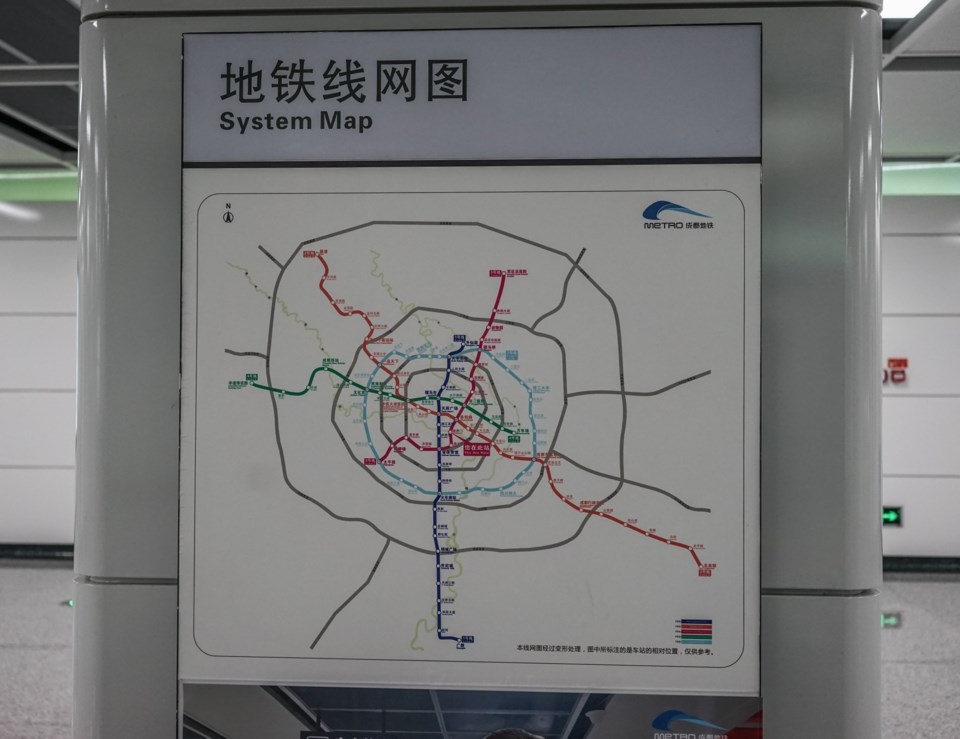There was a graphic making the rounds last week that compared the train transit maps for Chengdu, China to Toronto, Ont., for the years 2010 and 2024, respectively. “Sad” is an understatement.
In 14 years, Chengdu’s train system grew from nothing—no subways or light rail service—into a massive, interconnected network with a jaw-dropping 373 stops. Meanwhile, Toronto’s subway system lost its six-stop Scarborough line and then gained five stops on its northern line to Vaughan—a net loss of one stop in 14 years, with about 70 stops in total. The subway system has barely changed in the last 50 years, even as Toronto has grown from a smaller city of a million to a megacity of three million with another four million people living in the surrounding region.
This isn’t a Toronto problem, either. The inability to build big things—on time and near budget—is a full-blown Canadian crisis.
Look at the Site C dam, which was backfilled with water for the first time a few weeks ago after 14 years and $16 billion spent—more than double the original budget. Or the Trans Mountain pipeline expansion, which the federal government bought for $4.7 billion and expected to spend another $7.4 billion to complete—construction will come in at about $29 billion.
There are countless examples of other projects that have gone over time and budget, or were needed but later abandoned because of concerns about costs. Closer to home, we’re still waiting on a replacement for the three-lane George Massey Tunnel. The BC Liberal Party proposed a 10-lane bridge in 2017, which the NDP cancelled after determining the total cost would be closer to $12 billion with 50 years of financing. Instead they’re building an eight-lane tunnel with no light rail capability for a total cost of $4.1 billion—which presumably will need to be financed as well.
Meanwhile, south of the border, an out-of-control freighter collapsed the Francis Scott Key Bridge in Baltimore last year. The proposed replacement, four lanes and 2.6 kilometres long, is expected to cost $2.5 billion. What gives?
These infrastructure fails are making Canadian governments shy about taking on the big projects we sorely need. What possible incentive do elected politicians have to approve big projects if they’re hammered at the polls over every delay and penny spent? The political costs of doing nothing are less than doing something imperfectly, which is a recipe for stagnation.
And why are we so off-base when it comes to construction schedules and budgets? Do we not have good engineering and construction companies capable of accurately bidding on and delivering these projects? Is it an issue of oversight? Red tape? I get that First Nations consultation can be a challenge in getting some big projects approved, but it doesn’t come close to explaining our situation.
Making matters worse, every project we build seems to be a one-off. Every city uses different buses and trains that run on different track types and software systems, employing different companies to design and build projects from scratch. There are no economies of scale or prior experiences we’re leveraging—like adopting a single type of light rail car that gets used across Canada, or standard bridge designs that can be adapted to multiple locations.
Canada needs things. We need more transit in our major cities. We need high-speed rail options in Southern Ontario and Quebec, the Edmonton-Calgary corridor and the Vancouver-Seattle corridor. We need more electrical generation—nuclear plants, hydroelectric dams, windmill farms and solar farms connected to a smarter grid—to shift away from fossil fuels. We need bridges. We need highways. We need ferries. We need affordable housing and reliable water and sewerage. We need recreation centres and sports fields.
And yes, Whistler, we need public washrooms—even if the price tag is higher than seems reasonable. We are just as guilty of thinking small and safe as the rest of Canada, even as our population outgrows our recreation facilities, library, parks and other amenities. We all need to start thinking bigger.
What Canada needs is a top-down approach where all jurisdictions work together to identify what projects our provinces, cities and towns need so we can stop building one-offs from scratch. We need high-level engineering and oversight of everything, like the US Army Corps of Engineers provides south of the border. We need standard plans, specs and suppliers. We need a shortlist of private companies that can deliver on time and on budget. We need a faster and streamlined approvals process that respects First Nation rights.
Most of all, we need money. We need a way for provinces and cities to borrow funds for below market rates to build infrastructure. We need to bring back public works bonds. We need taxation earmarked for infrastructure that can only be spent on infrastructure.
Most of all, we need our political parties to agree to a plan for the future so we can stop making these big projects political. Stop kicking the can and passing the buck when we’re already behind.




